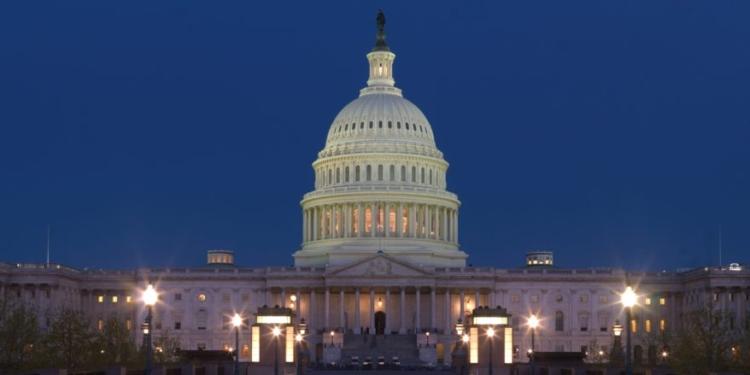SETH ORANBURG: Clarity Now: Congress Must Bring Truth to Crypto Markets
Recently, federal authorities unveiled the takedown of a $37 million global crypto scam that defrauded Americans nationwide. Five men pleaded guilty to running a sophisticated “pig butchering” scheme that lured victims through social media and dating apps, promised secure returns on digital asset investments, and then funneled their life savings overseas. This is not an isolated incident: the FBI reports that crypto scams cost Americans over $6.5 billion last year alone. Congressional inaction exposes more families to the regulatory void, while genuine innovators avoid U.S. markets.
Congress finally has an opportunity to change that. On June 10, the House Financial Services Committee advanced the Digital Asset Market Clarity Act (H.R. 3633) with bipartisan support, paving the way for the most significant digital asset reform in U.S. history. The bill, introduced just three weeks earlier, is now poised for a full House vote. The stakes could not be higher: the longer Congress delays, the more Americans fall victim to crypto scams rather than legitimate tokens.
Why has American crypto regulation failed for so long? Because our laws target the wrong focus: risk. The right level of risk is not zero, and it’s a fallacy to think that we regulate securities because they’re risky. Buying Beanie Babies is risky. Investing in Kansas farmland is risky. Even pursuing a law school education is risky. Risk, on its own, isn’t the justification for federal oversight.
What sets securities apart is truth. Securities regulation exists to make truth enforceable in capital markets. In finance, risk is something we can price only with reliable information. Disclosures, audited statements, and anti-fraud rules establish a legal framework where investors can trust that what they’re told is based on reality. If issuers can deceive or conceal material facts, risk turns into uncertainty. Markets collapse. The entire securities law regime aims not to eliminate risk, but to ensure that investors can assess it.
Some digital assets like Bitcoin challenge the principles of securities. Bitcoin lacks a company, cash flows, or any guarantee of performance. Speculation dictates its value. Such assets are inherently “truth-agnostic.” Their value isn’t tied to business fundamentals or future promises. These tokens function more like digital currency. We should regulate digital currency as cash, not as securities.
However, to date, whether the law treats cryptocurrency as securities hinges not on the token’s function but on its marketing or how investors perceive it. Whether a token qualifies as a security relies on the Howey test, created in 1946 to assess profit schemes involving orange groves, not computer code. This test leads to absurd outcomes, such as the same token (Ripple’s XRP) being both a security and a non-security based on the seller.
The outcome is a systemic misclassification. Categorization shifts with marketing language, judicial interpretation, or the buyer’s profile. Honest entrepreneurs face uncertainty; bad actors exploit the confusion. This isn’t merely a theoretical debate. Real-world crypto innovators are circumventing the U.S. regulatory maze. DeFi startups are blocking American users. Innovation is relocating overseas. Investors are left to fend for themselves. Scams slip through the cracks. It mirrors George Akerlof’s market for lemons, where the American crypto market risks being flooded with losers and frauds.
We’ve encountered this scenario before. In the 19th century, Americans circulated wildcat banknotes: currency was privately issued, unreliable, and often worthless. Congress, wisely, didn’t attempt to regulate those notes as securities; instead, it established a national currency via a new legal framework for a new form of value. Crypto’s “wildcat” era demands a similar bold clarity.
What makes the CLARITY Act effective is its approach: rather than regulating tokens based on sales methods or names, the Act categorizes them by functionality. Investment contracts fall under SEC oversight. Payment tokens and stablecoins adhere to banking regulations. Digital NFTs and collectibles are exempt from both regimes. The Act sets concrete, verifiable thresholds for insider control, registration deadlines, and joint rulemaking. It aligns U.S. law with global standards, ensuring American comparability if not leadership in international technology.
Some critics fear that regulation stifles innovation. In reality, CLARITY’s safe harbors for payments, collectibles, and decentralized protocols promote responsible innovation. It provides the clear rulebook that ethical builders seek while closing loopholes for fraud and manipulation.
The request is straightforward: Bring H.R. 3633 to the House floor before the July recess. Every day of delay risks another FTX-style collapse and another exodus of American talent offshore. Congress has the opportunity, now, to restore truth and confidence to digital asset markets and maintain the U.S. at the forefront of financial innovation.
Not every token is digital gold. Treating every blockchain asset identically is akin to equating the Magna Carta with a Keno ticket. The CLARITY Act finally establishes order amidst the chaos by ensuring our laws align with the realities.
Seth C. Oranburg is a law professor at the University of New Hampshire Franklin Pierce School of Law, specializing in digital asset regulation. His in-depth analysis of the CLARITY Act is accessible on SSRN. The opinions expressed in this commentary are solely those of the author and do not represent the official stance of the Daily Caller News Foundation. All content generated by the Daily Caller News Foundation, an independent and nonpartisan newswire service, is provided free of charge to any legitimate news outlet that can reach a large audience. Republished articles must include our logo, the reporter’s byline, and their DCNF affiliation. For inquiries about our policies or collaboration opportunities, please email [email protected].


